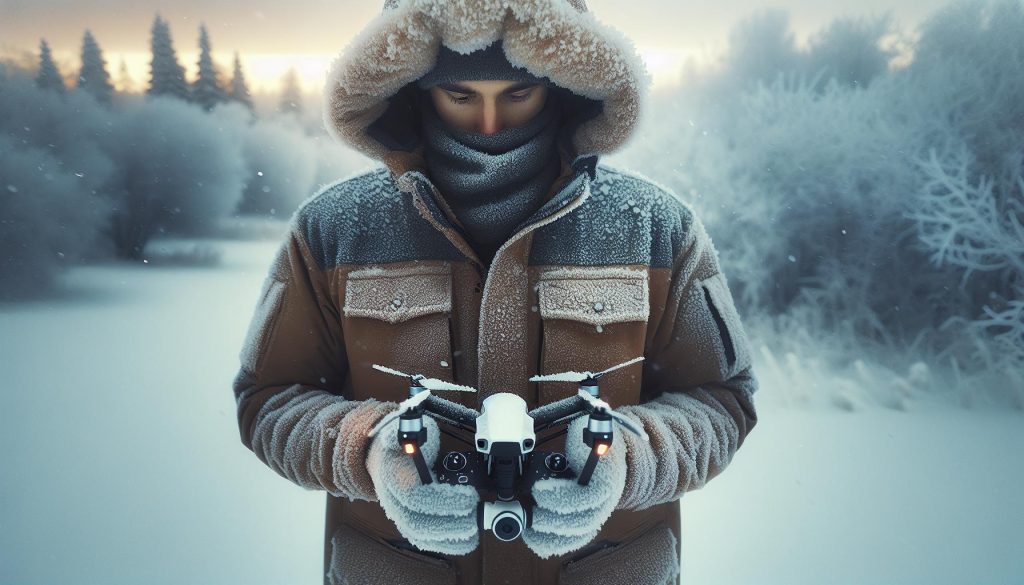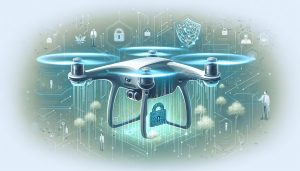As a drone enthusiast, you may wonder how cold is too cold for flying your DJI drone. With many pilots eager to capture stunning winter landscapes, understanding the temperature limits for safe flight is vital. Cold weather can affect battery performance, flight stability, and overall conductivity of your device, potentially leading to unsafe scenarios or equipment damage. Whether you’re a hobbyist keen on expanding your aerial portfolio or a professional capturing unique footage, knowing how cold you can fly your drone is essential for ensuring optimal performance and safety. Join us as we explore the temperature guidelines, tips for winter flying, and how to prepare your drone for chilly conditions, keeping your aerial adventures both thrilling and secure.
How Cold Affects DJI Drone Performance
Temperature plays a crucial role in the flight performance of DJI drones, affecting everything from battery life to overall operational capabilities. Cold weather can significantly impair a drone’s ability to function effectively, often resulting in reduced flight times, loss of control, and even potential damage if not managed properly. For instance, the lithium-polymer batteries commonly used in drones are highly susceptible to cold conditions. As temperatures drop, the chemical reactions within the battery slow down, leading to diminished capacity and efficiency. This means that a battery that would typically last 30 minutes in optimal conditions may only last 15 minutes in colder weather, which can be a critical consideration for drone operators planning extended flights.
In addition to battery performance, cold temperatures can impact the drone’s components, such as the gimbal and camera systems. Lubricants within motors can thicken, leading to sluggish performance, while sensors may not function as expected, impacting navigation and stability. DJI drones are generally designed to operate within a specific temperature range, typically from around -10°C to 40°C (14°F to 104°F), though this can vary by model. Therefore, knowing your drone’s limitations and the potential challenges posed by low temperatures is essential for safe operation.
To maximize performance in cold conditions, operators should take proactive measures. Before flying, it’s advisable to warm the batteries by keeping them in an insulated case or even storing them close to your body. When in operation, minimize exposure to cold winds, as these can further decrease battery efficiency and control. Regularly monitor battery voltage and flight time throughout the usage to avoid sudden power loss during flight. By understanding how cold affects drone performance, operators can better prepare and adapt their flying strategies, ensuring safer and more successful operations in wintery conditions.
Understanding Operating Temperature Limits
DJI drones are engineered for performance, but their capabilities can diminish significantly in cold weather. Understanding the operating temperature limits is crucial for ensuring both safety and optimal functionality. Most DJI drone models are designed to operate within a temperature range of approximately -10°C to 40°C (14°F to 104°F). However, these limits can vary slightly depending on the specific model and its intended use, so it’s essential to consult the user manual for precise values.
When the temperature dips below freezing, the performance of lithium-polymer batteries, which power most drones, can be severely affected. As the temperature lowers, the chemical reactions within the batteries slow down, resulting in reduced capacity and flight duration. For example, a drone that typically enjoys a 30-minute flight time in ideal conditions may only manage 15-20 minutes in colder environments. This limitation can have serious implications, particularly for users relying on their drones for critical missions, such as aerial inspections or search and rescue.
Beyond battery performance, other drone components can also suffer in low temperatures. The viscosity of lubricants in motors can increase, leading to sluggish movements, while various sensors may behave unpredictably or fail to calibrate correctly, thereby affecting navigation and stability. To mitigate such risks, operators are encouraged to keep their drones and batteries warm before takeoff, leveraging insulated cases or even keeping batteries close to the body. Furthermore, regular checks of battery voltage and the drone’s responsiveness can help identify potential issues early, allowing for a safer flying experience in frigid conditions.
In sum, awareness of your drone’s operating temperature limits is not just good practice; it’s essential for maximizing performance and safety in cold weather. Preparing adequately for low-temperature flights ensures that both the operator and the drone can navigate challenging conditions effectively, safeguarding investment and enhancing the overall flying experience.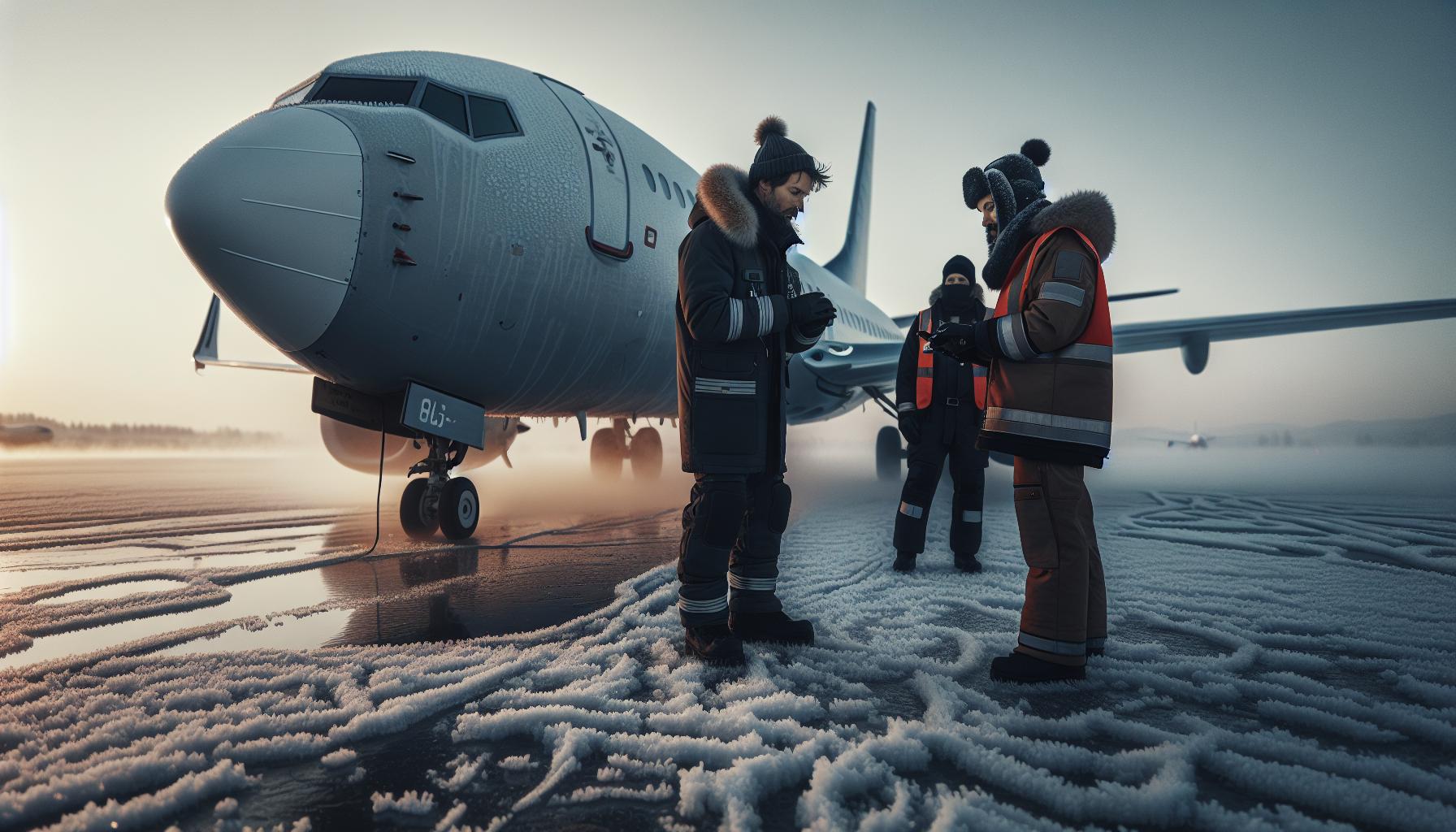
Safety Risks of Flying in Low Temperatures
Flying a drone in cold temperatures can be an exhilarating experience, but it comes with its own set of safety risks that operators must navigate. One of the primary concerns is the significant reduction in battery efficiency that occurs when temperatures drop. Lithium-polymer batteries, which are the standard for DJI drones, can lose up to 40% of their power in frigid conditions. This reduced capacity invariably impacts flight time and may leave operators stranded far away from their intended landing area, raising the stakes for safety.
The cold can also affect the mechanical components of the drone. Cold temperatures increase the viscosity of lubricants used in motors, which can lead to sluggish performance. The drone may respond slower to commands, and maneuverability may be compromised, making it challenging to execute precise movements or navigate tight spaces. Additionally, sensors and other electronic components may fail to calibrate properly or operate erratically in low temperatures, which can lead to navigation errors and even loss of control.
To mitigate these risks, taking specific precautions is essential. Operators should warm up their batteries before flight, ideally keeping them close to their bodies or using insulated cases designed for battery storage. Regular pre-flight inspections to ensure that all systems are functioning as intended are crucial, as is closely monitoring battery voltage during flight. Implementing practices like flying in short bursts with intervals to allow the drone to rest can also extend operational time in the cold.
In summary, while the allure of winter landscapes may tempt drone pilots to take to the skies, it is vital to remain vigilant about the unique safety challenges posed by low temperatures. A thorough understanding of how cold impacts drone performance, coupled with proactive measures, can enhance both safety and enjoyment during winter flights.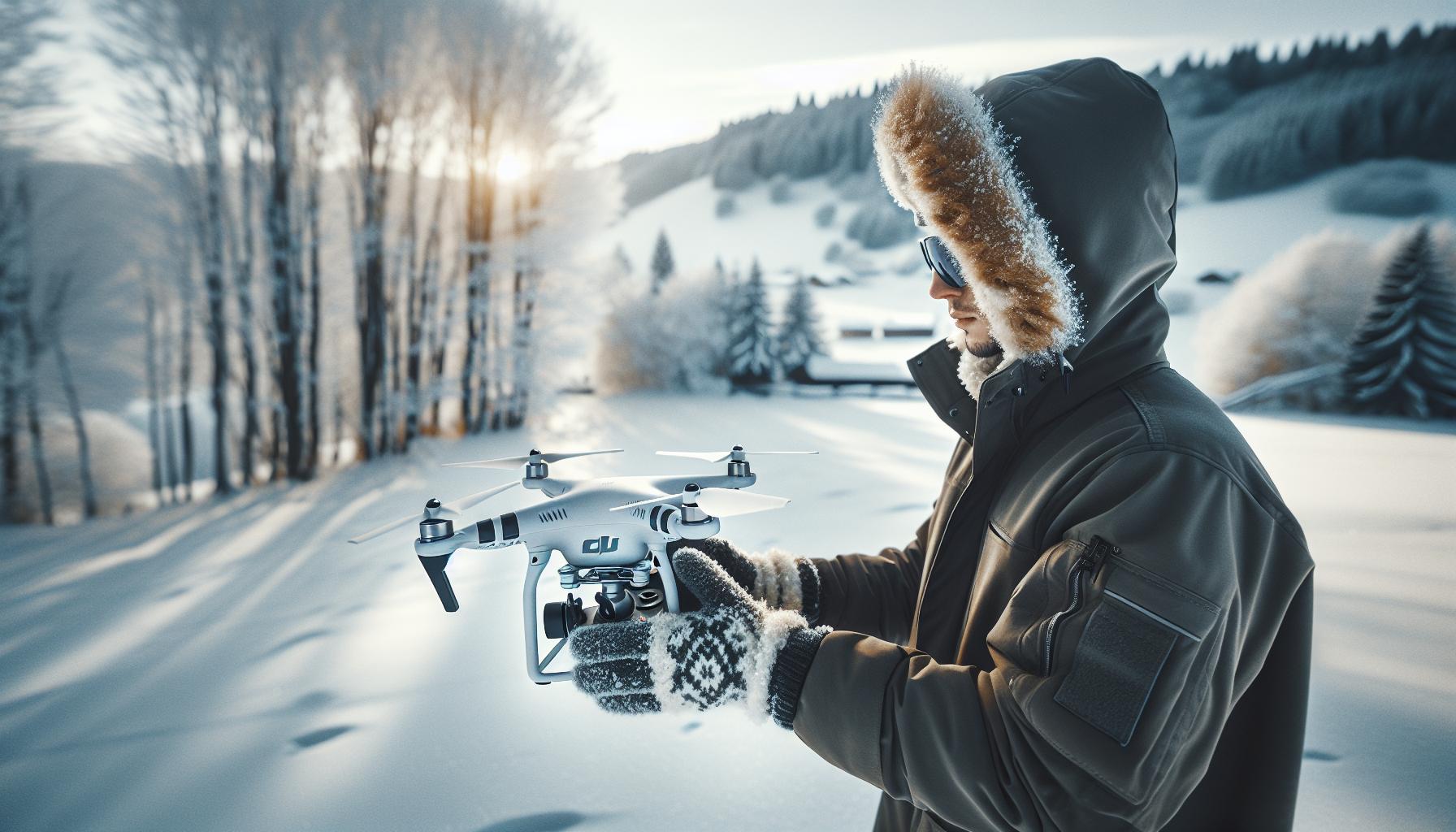
Recommended DJI Drone Models for Cold Weather
When the temperatures drop, some DJI drones are better equipped to handle the challenges that come with cold weather flying. Selecting the right model can significantly enhance your flying experience while minimizing risks associated with low temperatures. For operators looking to brave the winter elements, consider these recommended DJI drones, which have proven to perform well in cold conditions.
The DJI Mavic 3 Pro stands out as a top choice. With its advanced thermal management system, this drone is designed to maintain performance even in chilly environments. The Mavic 3 Pro is equipped with an impressive transmission range and extended flight time, allowing pilots to explore winter landscapes without frequently battling battery concerns. Its tri-camera setup not only enhances image quality, making it perfect for capturing winter scenery, but also guarantees reliable performance under less-than-ideal weather conditions.
Another excellent option is the DJI Air 3, which is known for its robust build and exceptional wind resistance. This drone can operate in temperatures as low as -10°C (14°F), making it suitable for a variety of cold weather tasks. The Air 3 offers dual-camera capabilities for versatile shooting options and features like obstacle sensing that can be invaluable when navigating the unique challenges posed by snow and ice.
For those who prefer a compact model, the DJI Mini 4 Pro is an appealing choice. This lightweight drone can withstand lower temperatures while still delivering high-quality images and videos. Its small size makes it easier to transport in cold weather, and it boasts impressive features like intelligent flight modes and extended battery life, allowing operators to capture stunning winter imagery without compromising performance.
While each of these models has unique strengths, operators should always remember that their performance in cold conditions can also depend on how well they’re maintained. Keeping batteries warm before flights and regularly checking for system functionality can extend the capabilities of any drone, ensuring a safe and enjoyable experience in winter weather.
Investing in the right DJI model for cold weather, along with proper pre-flight preparation, can greatly enhance any aerial adventure during the snowy months, providing stunning visuals and a flying experience that rivals other seasons.
Essential Gear for Cold Weather Drone Flying
When venturing into the realm of cold weather drone flying, having the right gear can make all the difference between a smooth operation and a frustrating experience. Cold temperatures can pose unique challenges that require additional equipment to ensure both the safety of the drone and the efficacy of the flight. Utilizing specialized gear not only extends the life of your drone during winter operations but also enhances your overall flying experience.
To start, investing in a high-quality protective case is crucial. These cases not only shield the drone from harsh weather conditions but also provide insulation to help maintain battery temperature. Consider models with padded interiors designed to reduce shock from bumps and falls, which can be more likely on icy surfaces. Additionally, using thermal wraps for battery insulation can keep them warm, ensuring they operate efficiently even in lower temperatures. It’s advisable to keep spare batteries close to your body heat, as lithium polymer batteries can lose power rapidly in the cold.
A reliable headset or goggles can also enhance your flying experience in winter environments. With reduced visibility due to snow and cloudy conditions, having clear visuals is essential for navigation. Look for models that offer anti-fog features to maintain visibility. Furthermore, gloves specifically designed for drone operation can protect your hands from freezing while allowing fingertip dexterity for precise controls. Many gloves now come touchscreen compatible, permitting the use of your remote controls without compromising warmth.
Lastly, consider a weatherproof controller cover or a set of protective skins for your drone itself. These accessories can resist moisture, prevent ice from forming on sensitive components, and ensure your device remains operational despite adverse weather. Incorporating these elements into your cold-weather setup will not only help preserve your drone’s performance but also increase your confidence in managing winter flights.
By equipping yourself with the right gear and being prepared for the conditions, you can maximize your chances of a successful drone operation in cold weather, allowing you to capture breathtaking winter landscapes with ease.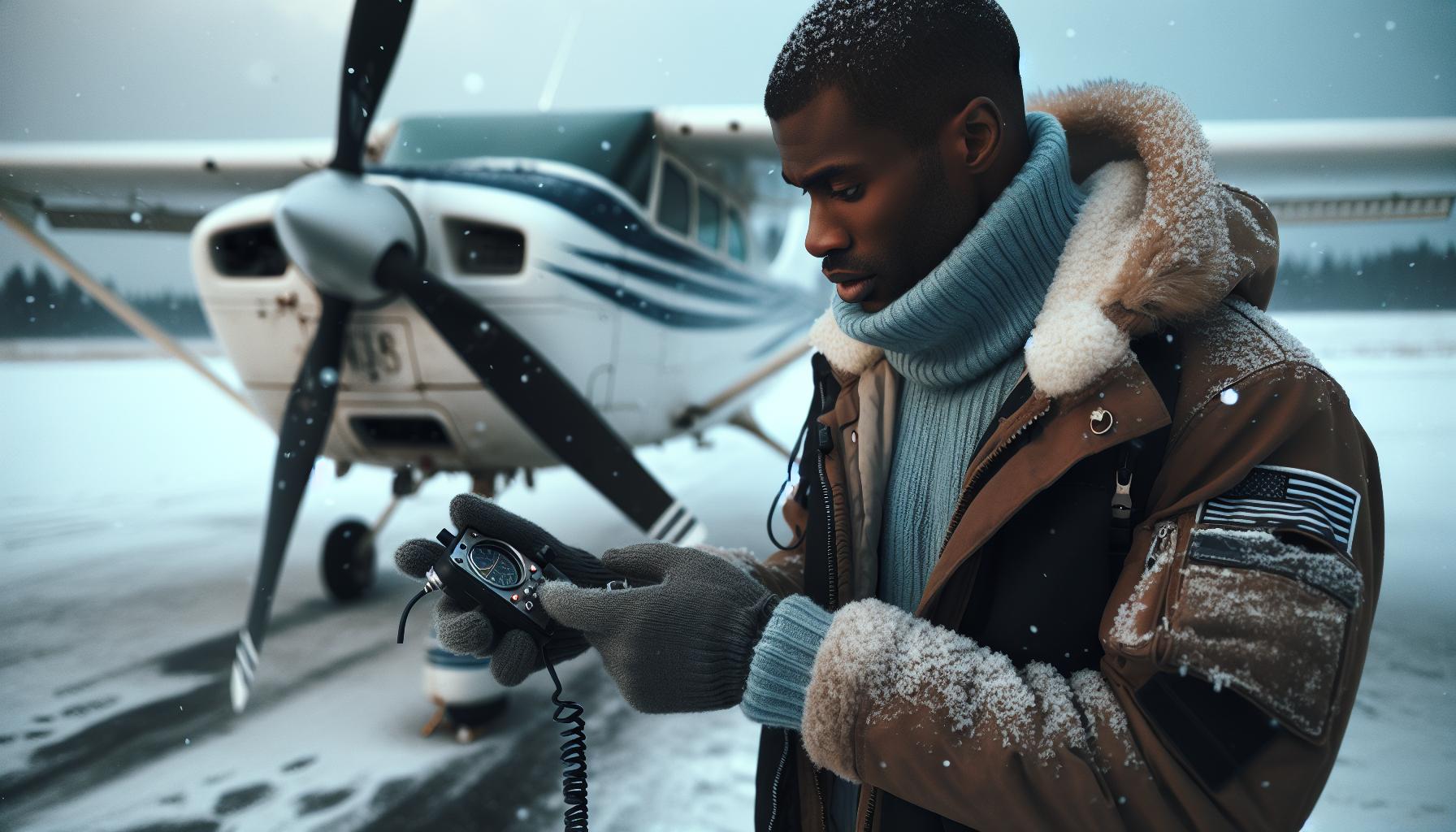
Pre-Flight Checklist for Cold Weather Operations
When preparing for a drone flight in cold weather, meticulous planning is essential to ensure both safety and performance. The chilling temperatures can impact various aspects of drone operation, including battery efficiency and visibility, making a pre-flight checklist an invaluable tool.
Start by checking the operational temperature limits of your specific DJI drone model; for most DJI drones, flight is typically discouraged below 14°F (-10°C) due to battery performance concerns. Always ensure that the drone’s firmware is updated to the latest version, as updates often include optimizations for performance in varied weather conditions.
Next, inspect your batteries closely. Ensure they are fully charged and warmed to suitable operating temperatures before the flight. Utilizing thermal wraps or battery heaters can prevent significant power loss. Keeping spare batteries within inner pockets can help maintain their warmth until they are needed. In addition, calibrate the compass and gimbal prior to takeoff, as cold temperatures can occasionally affect their functioning.
Visibility is another critical factor. Clear your camera lenses of any ice or snow, and inspect all visual sensors to ensure they are free of obstructions. If flying in snowy environments, avoid flying too low as reflective surfaces can confuse the drone’s sensors. Check the weather conditions for winds, as gusty winds can pose additional challenges. Lastly, familiarize yourself with your surroundings, ensuring no obstacles are within your flight path that could compromise the safety of your drone.
Adhering to this pre-flight checklist will not only boost your confidence while operating a DJI drone in winter conditions but also enhance the overall flying experience, allowing you to focus on capturing stunning winter landscapes without worry.
Tips for Maintaining Battery Life in Cold Weather
Operating your DJI drone in cold weather presents unique challenges, particularly when it comes to battery life. Low temperatures can significantly reduce battery efficiency and flight time, leading to unexpected returns and potential damage. To optimize the performance of your drone’s batteries in winter conditions, consider the following strategies:
One crucial approach is to pre-warm your batteries before takeoff. This can be achieved by simply keeping them inside your jacket or using insulated battery bags that retain heat. Letting batteries acclimate to room temperature for a time before flying ensures they operate within optimal parameters. Additionally, monitor the battery’s temperature before and during flights. It’s commonly recommended that batteries should be kept above 32°F (0°C) to prevent serious performance degradation.
Utilizing thermal wraps or battery heaters can also prove invaluable. These accessories are designed to keep the batteries at suitable temperatures throughout the flight. If equipped with temperature sensors, they can provide real-time feedback, allowing you to make informed decisions about whether to proceed with your mission. Carrying spare batteries is advisable, but be sure to keep them protected from freezing temperatures in your inner pockets, ready to swap out if needed.
It’s also beneficial to practice shorter flight sessions in cold environments. Long flights not only drain the battery faster but can also lead to a sudden loss of power if the temperature drops too low. Engaging in frequently shorter flights allows for real-time monitoring of battery performance and can help avoid surprises during extended missions. Always keep an eye on the battery level and be prepared to return home early if necessary.
Finally, consider post-flight care for your batteries. Once back indoors, reconnect your batteries to a charger, even if they are not completely depleted. Giving them a short charge quickly after use can ensure their longevity and readiness for your next flight. By integrating these practices into your cold-weather drone operations, you can maintain battery efficiency and performance, ensuring safe and successful missions even in chillier conditions.
Troubleshooting Common Cold Weather Issues
Operating a DJI drone in cold weather can present a host of challenges, and being prepared to troubleshoot common issues is crucial for successful flights. One prevalent problem pilots encounter is erratic battery performance. As temperatures drop, battery efficiency can diminish significantly, leading to unexpected alerts about low battery levels or even sudden power loss mid-flight. To mitigate this, keep your batteries insulated and warm before use, as previously mentioned. Additionally, consider monitoring battery voltage and capacity closely through the DJI app, which can provide real-time statistics and alerts if battery performance falls below a safe threshold.
Another issue is the drone’s reluctance to take off in cold conditions. Drones often have built-in safety features that prevent launch if temperatures are too low. If the drone displays warnings or refuses to start, check the temperature gauge within the app and ensure conditions are within the manufacturer’s recommended range. If flying in the permissible temperature range, ensure all systems are correctly calibrated and try powering down the drone for a moment before attempting to start it again.
Moreover, fluctuations in wind conditions can have a more pronounced effect in winter months. Low temperatures can lead to denser air, which may feel calmer at ground level but can create turbulence at altitude. Pilots should perform thorough pre-flight checks, paying particular attention to wind speed and direction, and be ready to adjust flight plans accordingly. It’s also wise to fly in open areas rather than close to trees or buildings, which could create unexpected wind patterns.
Finally, camera performance can also suffer in colder temperatures. Condensation may form on the lens, obscuring your shots. To avoid this, acclimatize your drone to the outside temperature gradually and wipe the lens with a microfiber cloth before takeoff and periodically throughout the flight. Being aware of these common issues allows pilots to react proactively, ensuring their winter drone adventures are not only enjoyable but also safe and successful.
Legal Considerations for Cold Weather Flying
When flying your DJI drone in cold weather, understanding the legal landscape is crucial for a trouble-free aerial experience. Regulations can vary significantly based on your location and the specific conditions of your flight. Unpacking these legal considerations ensures that you not only enjoy your flying experience but also remain compliant with local laws, which can sometimes carry hefty fines for non-adherence.
Different countries have different rules regarding drone operation; however, the fundamentals often include altitude restrictions, no-fly zones, and the requirement to maintain a visual line of sight with your drone at all times. In colder regions, it’s essential to stay informed about temporary regulations that might be enacted during winter months, especially in places where wildlife migrates or where specific outdoor activities take place. Always check with local aviation authorities like the Federal Aviation Administration (FAA) in the United States or the Civil Aviation Authority (CAA) in the UK for updates on regulations particularly relevant during winter.
Moreover, certain jurisdictions may impose additional restrictions in cold weather due to the increased risk of flight incidents caused by icy conditions. Pilots must remain vigilant about air traffic regulations and any notices specific to winter weather hazards. It’s prudent to keep an eye on local advisories regarding the use of airspace above frozen lakes or mountainous terrain, where the potential for drone interference with manned aircraft may heighten during ski season.
Lastly, consider the implications of liability insurance. While not universally required, having drone insurance can provide coverage for damage caused during flights, particularly in harsh weather conditions where equipment failure or pilot error can result in accidents. Pilots should conduct a thorough risk assessment before flying in extreme temperatures and ensure they are covered for the conditions they may encounter.
In summary, flying in cold weather necessitates a careful navigation of both general and specific legal frameworks, ensuring safety and compliance while optimizing for successful and enjoyable drone operations during winter months.
Real-World Experiences: Flying Drones in Winter Conditions
When the winter chill sets in, drone enthusiasts may wonder how their favorite flying machines will handle the elements. A notable example comes from a hobbyist who took their DJI Mavic 2 Pro out for a winter photography mission. They found that, despite operating well at temperatures just below freezing, battery performance dropped significantly, resulting in a much shorter flight time than typical. This experience underlines the importance of knowing not only the drone’s specs but also how different temperatures affect overall performance.
Cold weather not only impacts battery life but also affects the drone’s sensors and control responsiveness. Pilots have reported instances where the GPS signal was less reliable in frigid conditions, potentially leading to drift. It’s essential to be aware that while many DJI drones, such as the Mavic Air 2, can technically operate in temperatures as low as -10°C (14°F), the nuance of operating under those conditions means preparing for possible reduced functionality. To mitigate these risks, many pilots recommend keeping the drone warm before flight. One effective strategy involves storing it in an insulated bag until just before takeoff to help maintain optimal operating temperature.
Furthermore, weighing the potential risks against the rewards is crucial. For instance, capturing stunning winter landscapes can yield breathtaking footage, but challenges like snow, ice, and wind must be addressed. Pilots should anticipate and adapt to the unique conditions presented by winter flying. Many seasoned operators suggest planning short flights, allowing for quick adjustments based on the drone’s performance and the environmental factors at play. This practice not only enhances safety but also helps to preserve equipment integrity, making for a more enjoyable overall experience.
By sharing real-world experiences, drone operators can learn from each other’s successes and missteps in chilly flying conditions, ensuring they are better prepared for their own winter adventures. Engaging with local drone communities, either online or in-person, can provide valuable insights tailored to specific environments and conditions, fostering a supportive atmosphere for all flying enthusiasts as they navigate the joys and challenges of winter drone operation.
Best Practices for Safe Cold Weather Flights
When winter’s chill descends, it presents both challenges and opportunities for drone pilots. To safely operate your DJI drone in cold weather, following a set of best practices can significantly enhance your flying experience while preserving the integrity of your equipment.
One of the foremost strategies is to keep your batteries warm before flight. Lithium polymer batteries, commonly used in DJI drones, can lose efficiency rapidly in low temperatures. Storing batteries in insulated pouches or their boxes, and keeping them close to your body warmth prior to taking off, can help maintain their charge and performance. When in the field, try to keep them in an insulated bag during breaks.
Additionally, it’s crucial to monitor battery health diligently during cold weather flights. Signs of battery fatigue, such as rapid voltage drops or unusual heat during charging, are critical to note. Since cold weather can lead to a significant decrease in flight time, plan shorter missions and always have a backup battery on hand. Consider zeroing in on your drone’s battery management system to keep track of the remaining charge, especially as temperatures drop.
Weather conditions also impact flights. Prioritize checking the wind conditions before launching. Cold air can carry stronger wind gusts, which might not be evident at ground level. A strong wind can exacerbate the drone’s response time and control, resulting in potential mishaps. Similarly, be wary of snow and ice on surfaces. Avoid takeoff from slippery areas, as this can cause loss of control during ascent or landing.
Finally, consider implementing a thorough pre-flight checklist tailored for cold weather. This list should include checking the drone for ice build-up, inspecting propellers for any damage caused by cold temperatures, and ensuring all sensors are functional. Test your drone in a safe, controlled area before attempting any advanced maneuvers or capturing footage. With these best practices in mind, you’ll be better poised to enjoy the beauty of winter landscapes while ensuring a safe and effective flight experience.
Faq
Q: What is the minimum temperature for flying a DJI drone?
A: The minimum recommended temperature for flying most DJI drones is 14°F (-10°C). Operating below this temperature may result in reduced battery performance and potential functionality issues. Be sure to check your specific drone’s manual for detailed operating limits.
Q: How can cold weather affect my DJI drone’s battery life?
A: Cold weather significantly reduces battery efficiency, leading to shorter flight times. In low temperatures, the chemical reactions in lithium batteries slow down, causing rapid depletion. Always keep your batteries warm before flight to help maintain performance.
Q: Is it safe to fly a DJI drone in snowy conditions?
A: Flying a DJI drone in snowy conditions can be risky due to low visibility and the possibility of snow interfering with sensors. DJI recommends avoiding flights over reflective or thick snow, and using a landing pad to protect motors from moisture [[2]].
Q: What precautions should I take when flying a DJI drone in cold weather?
A: When flying in cold weather, use a landing pad, keep batteries warm, and ensure all sensors are clean and free from snow. Additionally, monitor your drone’s performance closely during flight as the cold can affect both control and battery life.
Q: Can you fly DJI drones in temperatures below 0°F (-18°C)?
A: It is generally not advisable to operate DJI drones in temperatures below 0°F (-18°C) as it may severely impact battery life and overall drone functionality. Always consult your drone model’s specifications for safe operating conditions.
Q: How should I store my drone battery in cold weather?
A: Store your DJI drone batteries in a warm, dry environment when not in use. If flying in cold conditions, consider pre-warming the battery by keeping it close to your body before insertion. This helps maintain battery performance during flights.
Q: Are there specific DJI models better suited for cold weather flying?
A: Some DJI models, such as the Mavic 2 and Phantom series, perform better in cold weather due to their robust designs and optimized batteries. Always follow the manufacturer’s guidelines for your specific model when flying in low temperatures.
Q: What should I do if my DJI drone experiences issues in cold weather?
A: If your drone encounters problems in cold weather, land immediately and investigate the cause. Check for frost or moisture on sensors, battery temperature, and operational responsiveness. For detailed troubleshooting, refer to your drone’s user manual for specific guidance.
Closing Remarks
As you venture into the skies with your DJI drone, understanding how cold weather impacts your flight will enhance both your experience and the performance of your device. Remember, staying within the recommended temperature limits is essential for safety and optimal functionality. If you have further questions about drone operation in various weather conditions, don’t hesitate to check out our comprehensive guides on drone maintenance and flying safely in challenging environments.
For those looking to elevate their flying skills, exploring our tutorials on firmware updates and gimbal calibration can provide the edge you need. Don’t miss out-subscribe to our newsletter to stay updated on the latest drone technologies and tips! Your feedback and experiences are valuable to us; feel free to share in the comments below or connect with fellow enthusiasts on our forum. Fly smart, and see you in the air!

